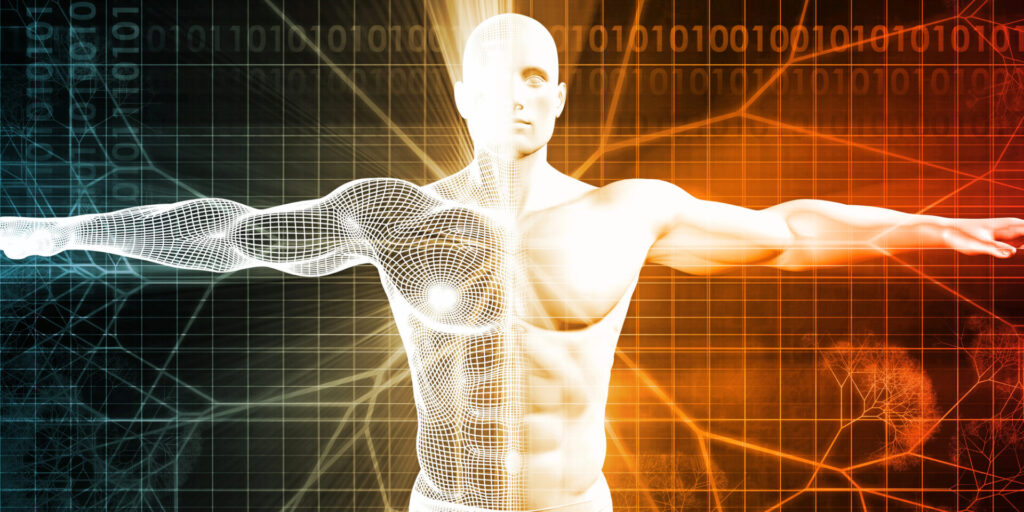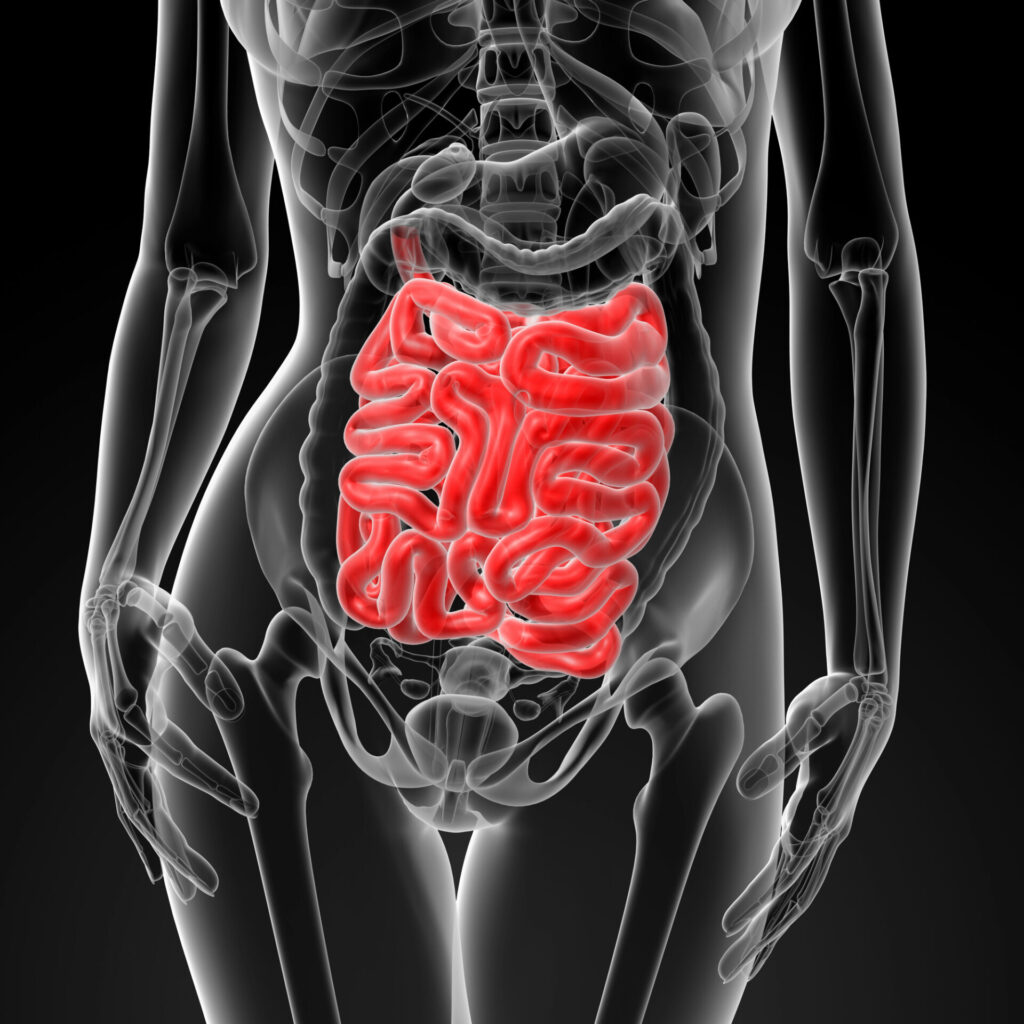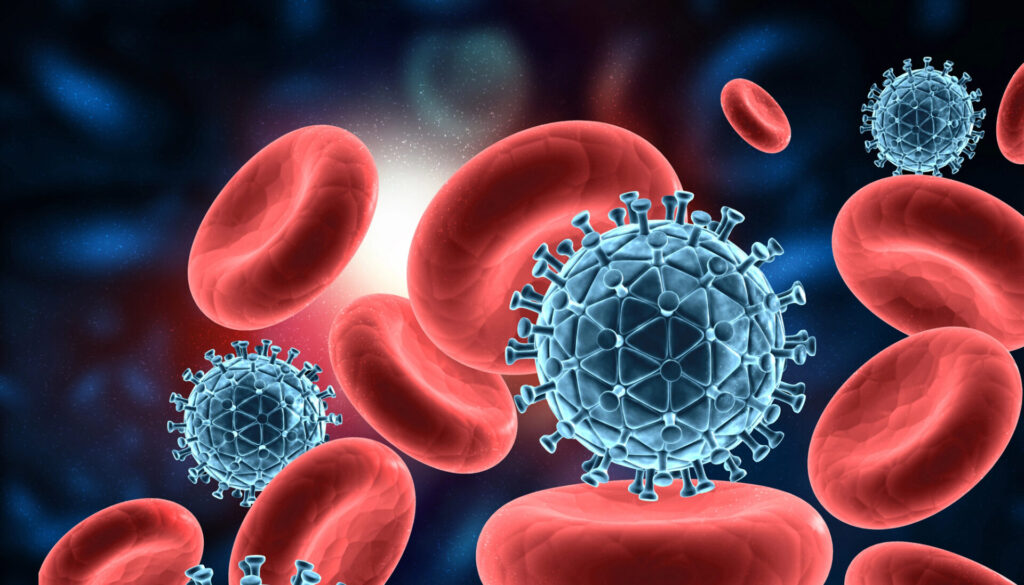The endocannabinoid system (ECS) and endocannabinoid deficiency is an often neglected aspect of improving patients’ health. I liken it to adrenal fatigue and how adrenal dysfunction leads to low cortisol production and the resulting inflammation. Just as we can support the health of the adrenal glands, we can support the endocannabinoid system in order to strengthen many aspects of health.
This article will address the many ways in which the ECS impacts health, as well as what can be done to support the ECS in our patients.
What Is The Endocannabinoid System?
The ECS is a network within the body comprised of endogenous endocannabinoids (chiefly anandamide [AEA] and 2-arachidonoylglycerol), G-protein-coupled receptors (mainly CB1 and CB2), and enzymes such as FAAH that tightly regulate endocannabinoid tone.1 Circulating levels of these enzymes are altered by physiology and disease. Cannabinoid receptors CB1 are highly expressed in the brain and peripheral neurons, and CB2 is expressed mainly on immune cells and some glia/peripheral tissues.2
The ECS helps regulate pain, mood, appetite/energy balance, memory, immune responses, gut function, and more.1 Dysregulation of the ECS is implicated in common health problems such as pain, mood disorders, metabolic disease, and inflammatory and immune conditions.1
How The Endocannabinoid System Affects Human Health
The ECS casts a wide net over health, playing an important role in many aspects of physical and mental well-being. For example:
- Pain and nociception. Endocannabinoid signaling suppresses nociceptive transmission in peripheral nerves and within central pain circuits. Preclinical and clinical research suggest cannabinoids are regulators of chronic and neuropathic pain.3
- Mood, anxiety, and cognition. ECS tone influences fear extinction, stress responses, and mood. Alterations in the ECS are linked to depressive and anxiety disorders, while endocannabinoid-enhancing strategies support calm, relaxation, and mood.4 Endocannabinoids are thought to be involved in the mood-boosting effects of exercise.5
- Weight management. Peripheral CB1 signaling controls adipose tissue, glucose homeostasis, and lipid metabolism, indicating cannabinoids can support a healthy weight.5
- Immune and inflammation. Endocannabinoids are involved in immune cell activation, cytokine production, and inflammation resolution, but endocannabinoids can exert both anti‐inflammatory and pro‐inflammatory effects in specific contexts.6
- Gut and barrier function. ECS signaling plays a role in intestinal motility, visceral sensation, epithelial barrier integrity, and gut-brain signaling, which are of interest in irritable bowel syndrome (IBS), inflammatory bowel disease (IBD), and visceral pain.7
- Neurodevelopment, synaptic plasticity, and memory. The ECS is involved in short- and long-term synaptic plasticity, with implications for learning and memory.8
Epigenetics and the Endocannabinoid System
One fascinating aspect of the ECS is that it can be influenced by epigenetics.9 Epigenetics are changes caused by alterations in gene expression rather than changes to the genetic code itself. These changes are caused by environmental factors that act like a switch that turn genes on and off.
Research indicates factors like alcohol, diet, emotional stress, and smoking can modify the ECS through epigenetic mechanisms.9 These epigenetic changes target genes encoding for cannabinoid receptors and the ECS enzyme FAAH, which leads to changes in endocannabinoid signaling or tone. Epigenetic changes to the ECS include alterations in DNA methylation (both global and gene-specific), histone tail modifications, and the production of specific miRNAs in different brain regions, peripheral tissues, and cell lines.9 Epigenetic alterations in the ECS are known to occur in pathological states such as Alzheimer’s disease, glioblastoma, colorectal cancer, and heart failure.10-13
How to Support the Endocannabinoid System
Non-psychoactive phytocannabinoids and other plant compounds can nourish the ECS and support balanced levels of endocannabinoids.
- Cannabidiol (CBD): Influences the ECS by suppressing FAAH (decreasing anandamide breakdown) and affecting CB1/CB2 signaling. Research indicates CBD has applications in a number of health conditions. Several studies have shown that CBD oil supports calm and relaxed feelings in subjects undergoing a simulated public speaking test.14-16 CBD may also promote a restful night’s sleep,16,17 which is important as sleep deprivation can lead to epigenetic changes.18 Furthermore, CBD may have a role to play in pain management. Rodent studies have found CBD to be beneficial in resolving joint pain and inflammation.19-21 In a human study, CBD led to improvement in joint pain in women on an aromatase inhibitor, a type of medication that can cause musculoskeletal symptoms.22A type of CBD formulated with VESIsorb® technology improves the absorption,23 which is why I use this type of CBD in my clinical practice.
- β-Caryophyllene: A dietary terpene in black pepper and cloves, β-Caryophyllene is a CB2 receptor agonist that supports a healthy inflammatory response.24 The first known dietary cannabinoid, β-Caryophyllene was among the first hemp-derived substances shown to bind directly to endocannabinoid receptors. It has a synergistic effect when combined with CBD.25
Other Ways to Support the ECS
In addition to using interventions such as CBD (ideally with VESIsorb® technology to enhance absorption) and β-Caryophyllene, patients can employ other strategies such as:
Diet and Nutrition
- Omega-3 fatty acids: Long-chain omega-3s (EPA, DHA) are important for ECS receptor function and synthesis of endocannabinoid-like mediators.26 Diets low in omega-3 impair CB1 receptor coupling.27
- Polyphenols and flavonoids: Compounds such as curcumin and quercetin influence endocannabinoid metabolism and receptor activity.28,29
- Gut health and probiotics: The gut microbiome interacts with ECS receptors in the intestine, influencing barrier function, motility, and inflammation.1,30
Lifestyle Factors
- Exercise: Moderate aerobic exercise increases circulating AEA, linked to the “runner’s high” and improved mood.31
- Stress reduction: Chronic stress downregulates ECS signaling, while practices such as meditation and yoga support ECS tone.32
- Sufficient sleep: Sleep deprivation can activate the endocannabinoid system, leading to excessive food intake and an increased risk of obesity in people who do not get enough sleep.33
Conclusion
The endocannabinoid system plays a crucial role in various aspects of health, including mood, cognitive function, pain management, weight regulation, gut health, and supporting a healthy inflammatory response. One way to support the endocannabinoid system is by supplementing with a type of CBD that is formulated with VESIsorb® technology for enhanced bioavailability. Combining CBD together with the terpene β-Caryophyllene can be especially effective. Other strategies to support the ECS include omega-3 fatty acids, curcumin, quercetin, and probiotics. Exercise, stress reduction techniques, and getting sufficient sleep also play a role in ECS support as well as epigenetic health. By supporting the ECS, we can optimize many aspects of our patients’ health.
References:
- Russo EB. Clinical Endocannabinoid Deficiency Reconsidered: Current Research Supports the Theory in Migraine, Fibromyalgia, Irritable Bowel, and Other Treatment-Resistant Syndromes. Cannabis Cannabinoid Res. 2016;1(1):154-165.
- Lu HC, Mackie K. Review of the Endocannabinoid System. Biol Psychiatry Cogn Neurosci Neuroimaging. 2021;6(6):607-615.
- Finn DP, Haroutounian S, Hohmann AG, Krane E, Soliman N, Rice ASC. Cannabinoids, the endocannabinoid system, and pain: a review of preclinical studies. Pain. 2021;162(Suppl 1):S5-s25.
- Hasbi A, Madras BK, George SR. Endocannabinoid System and Exogenous Cannabinoids in Depression and Anxiety: A Review. Brain Sci. 2023;13(2).
- Hillard CJ. Circulating Endocannabinoids: From Whence Do They Come and Where are They Going? Neuropsychopharmacology. 2018;43(1):155-172.
- Rahaman O, Ganguly D. Endocannabinoids in immune regulation and immunopathologies. Immunology. 2021;164(2):242-252.
- Cuddihey H, MacNaughton WK, Sharkey KA. Role of the Endocannabinoid System in the Regulation of Intestinal Homeostasis. Cell Mol Gastroenterol Hepatol. 2022;14(4):947-963.
- Lemtiri-Chlieh F, Levine ES. 2-AG and anandamide enhance hippocampal long-term potentiation via suppression of inhibition. Front Cell Neurosci. 2022;16:1023541.
- Meccariello R, Santoro A, D’Angelo S, et al. The Epigenetics of the Endocannabinoid System. Int J Mol Sci. 2020;21(3).
- D’Addario C, Di Francesco A, Arosio B, et al. Epigenetic regulation of fatty acid amide hydrolase in Alzheimer disease. PLoS One. 2012;7(6):e39186.
- Etcheverry A, Aubry M, de Tayrac M, et al. DNA methylation in glioblastoma: impact on gene expression and clinical outcome. BMC Genomics. 2010;11:701.
- Hasenoehrl C, Feuersinger D, Sturm EM, et al. G protein-coupled receptor GPR55 promotes colorectal cancer and has opposing effects to cannabinoid receptor 1. Int J Cancer. 2018;142(1):121-132.
- Möhnle P, Schütz SV, Schmidt M, et al. MicroRNA-665 is involved in the regulation of the expression of the cardioprotective cannabinoid receptor CB2 in patients with severe heart failure. Biochem Biophys Res Commun. 2014;451(4):516-521.
- Appiah-Kusi E, Petros N, Wilson R, et al. Effects of short-term cannabidiol treatment on response to social stress in subjects at clinical high risk of developing psychosis. Psychopharmacology (Berl). 2020;237(4):1121-1130.
- de Faria SM, de Morais Fabrício D, Tumas V, et al. Effects of acute cannabidiol administration on anxiety and tremors induced by a Simulated Public Speaking Test in patients with Parkinson’s disease. J Psychopharmacol. 2020;34(2):189-196.
- Shannon S, Lewis N, Lee H, Hughes S. Cannabidiol in Anxiety and Sleep: A Large Case Series. Perm J. 2019;23:18-041.
- Carlini EA, Cunha JM. Hypnotic and antiepileptic effects of cannabidiol. J Clin Pharmacol. 1981;21(S1):417s-427s.
- Zhang Z, Ren H, Cheng Y, et al. Sleep disorders and aging: Mendelian randomization analysis of epigenetic and frailty markers. J Affect Disord. 2025;391:119989.
- Philpott HT, OʼBrien M, McDougall JJ. Attenuation of early phase inflammation by cannabidiol prevents pain and nerve damage in rat osteoarthritis. Pain. 2017;158(12):2442-2451.
- Costa B, Trovato AE, Comelli F, Giagnoni G, Colleoni M. The non-psychoactive cannabis constituent cannabidiol is an orally effective therapeutic agent in rat chronic inflammatory and neuropathic pain. Eur J Pharmacol. 2007;556(1-3):75-83.
- Costa B, Colleoni M, Conti S, et al. Oral anti-inflammatory activity of cannabidiol, a non-psychoactive constituent of cannabis, in acute carrageenan-induced inflammation in the rat paw. Naunyn Schmiedebergs Arch Pharmacol. 2004;369(3):294-299.
- Fleege NMG, Miller EA, Kidwell KM, et al. Pilot Study of Cannabidiol for Treatment of Aromatase Inhibitor-Associated Musculoskeletal Symptoms in Breast Cancer. Cancer Med. 2025;14(15):e71117.
- Knaub K, Sartorius T, Dharsono T, Wacker R, Wilhelm M, Schön C. A Novel Self-Emulsifying Drug Delivery System (SEDDS) Based on VESIsorb(®) Formulation Technology Improving the Oral Bioavailability of Cannabidiol in Healthy Subjects. Molecules. 2019;24(16).
- Niri P, Saha A, Polopalli S, et al. β-Caryophyllene attenuates oxidative stress and inflammatory response in LPS induced acute lung injury by targeting ACE2/MasR and Nrf2/HO-1/NF-κB axis. Biochem Biophys Res Commun. 2025;746:151286.
- Mazzantini C, El Bourji Z, Parisio C, et al. Anti-Inflammatory Properties of Cannabidiol and Beta-Caryophyllene Alone or Combined in an In Vitro Inflammation Model. Pharmaceuticals (Basel). 2024;17(4).
- Batetta B, Griinari M, Carta G, et al. Endocannabinoids may mediate the ability of (n-3) fatty acids to reduce ectopic fat and inflammatory mediators in obese Zucker rats. J Nutr. 2009;139(8):1495-1501.
- Hammels I, Binczek E, Schmidt-Soltau I, et al. Novel CB1-ligands maintain homeostasis of the endocannabinoid system in ω3- and ω6-long-chain-PUFA deficiency. J Lipid Res. 2019;60(8):1396-1409.
- Hassanzadeh P, Hassanzadeh A. The CB₁ receptor-mediated endocannabinoid signaling and NGF: the novel targets of curcumin. Neurochem Res. 2012;37(5):1112-1120.
- Refolo MG, D’Alessandro R, Malerba N, et al. Anti Proliferative and Pro Apoptotic Effects of Flavonoid Quercetin Are Mediated by CB1 Receptor in Human Colon Cancer Cell Lines. J Cell Physiol. 2015;230(12):2973-2980.
- Lane RM, Egan LJ, McGuire BE, McKernan DP, O’Mahony SM, Finn DP. Endocannabinoid system modulation for visceral abdominal pain in inflammatory bowel disease and irritable bowel syndrome: A protocol for systematic review and meta-analysis. HRB Open Res. 2025;8:40.
- Jurado-Fasoli L, Yang W, Kohler I, et al. Effect of Different Exercise Training Modalities on Fasting Levels of Oxylipins and Endocannabinoids in Middle-Aged Sedentary Adults: A Randomized Controlled Trial. Int J Sport Nutr Exerc Metab. 2022;32(4):275-284.
- Vishnubhotla RV, Wood PL, Verma A, et al. Advanced Meditation and Vegan Diet Increased Acylglycines and Reduced Lipids Associated with Improved Health: A Prospective Longitudinal Study. J Integr Complement Med. 2022;28(8):674-682.
- Hanlon EC, Tasali E, Leproult R, et al. Sleep Restriction Enhances the Daily Rhythm of Circulating Levels of Endocannabinoid 2-Arachidonoylglycerol. Sleep. 2016;39(3):653-664.







